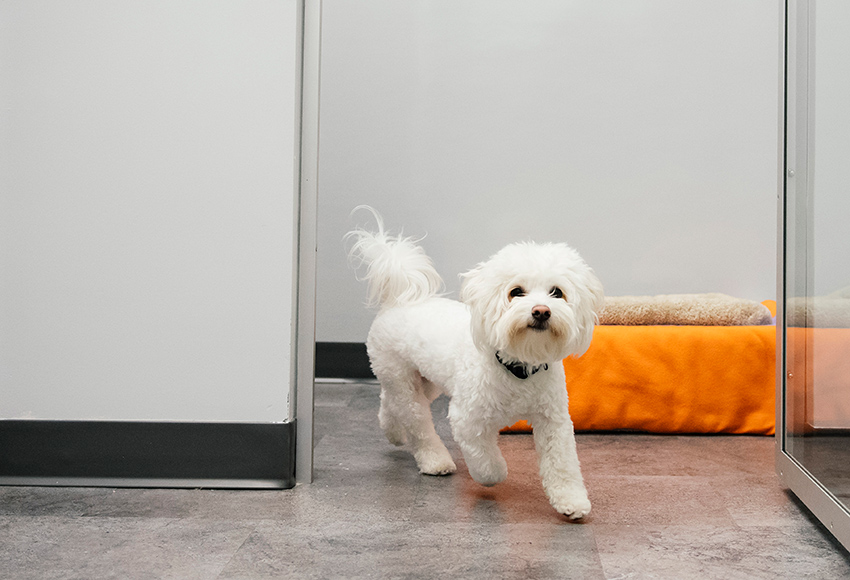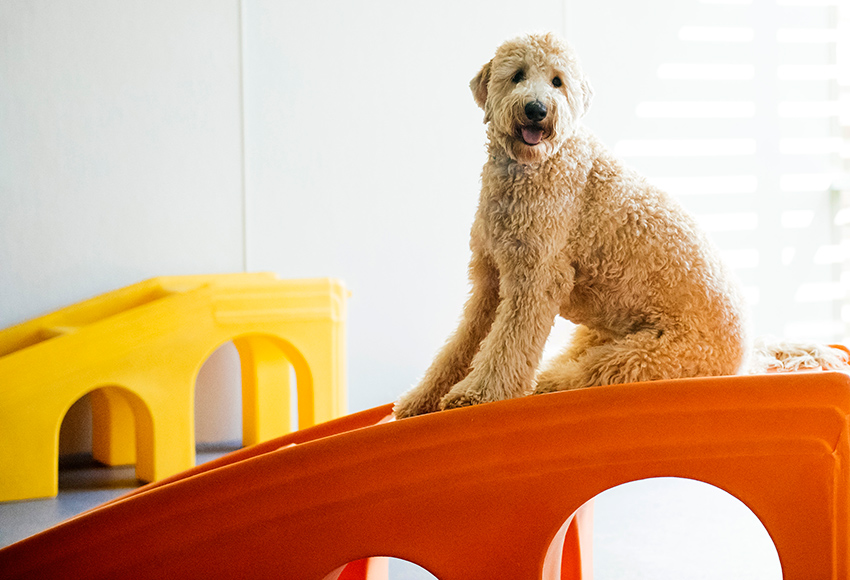8 Most Misunderstood Dog Behaviors Explained

These are the 8 most misunderstood dog behaviors explained. Misunderstood dog behaviors can stem from a variety of things. Often caused by our misinterpretation or lack of understanding of dog body language and thinking.
Growling
While growling can appear aggressive to people, it’s a dog’s way of expressing discomfort, fear, or stress. It’s often a warning signal, not always a sign of aggression. Understanding the context and triggers behind the growl is crucial. Many dog breeds can be targeted as aggressive breeds. This behavior can be a result of a high intelligence and protective instinct. Appropriate training, early socialization and an understanding of triggers can transform these pups into great canine citizens. Dogtopia of Viera dog daycare can help pups with socialization in a safe consistent environment. We understand the 8 most misunderstood dog behaviors.
Barking
Dogs bark for all kinds of reasons. It’s is a great way to communicate with people and other animals around them. Barking can be a form of alerting their pack, be it human, or other dogs, or seeking attention. Excessive barking can be a sign of boredom, anxiety, or a need for stimulation rather than just being noisy. It is often misunderstood by the pet parent and regarded as just a nuisance. Make sure your pup gets plenty of exercise. Dogs require at least 60-90 minutes of activity per day. Dog walks, fetch in the backyard, and doggie daycare at Dogtopia of Viera are good ways to tire your dog out. Remember, tired dogs are quiet dogs!
Tail Wagging
Contrary to popular beliefs, tail wagging isn’t always a sign of friendliness. It depends on how the tail is moving. The speed, height, and stiffness of the wag can convey different emotions. A fast, high wag might indicate excitement or arousal, while a slow, low wag could signal insecurity or potential aggression. A tick tock motion of a tail means your dog is feeling uncertain or alerted to a potential danger. If your pup’s tail drops or is rooted between their legs, your dog is feeling scared or insecure. A fast wagging tail or a tail that is wagging in a circular pattern means your dog is happy, ecstatic even. We see this when our pups know they are headed to Dogtopia Viera for their Most Exciting Day Ever!
Jumping Up
I can’t get my dog to stop jumping up! We hear this so often from pet parents. Dogs have many reasons that they jump up. They often jump up to greet people. This behavior can be misunderstood as dominance or aggression. In reality, it’s most often a result of excitement and a desire for attention. Teaching different ways to greet can help manage this behavior. An excited dog takes patience and kindness to work with. Set your dog up for success. Catch them being good! When your pup jumps up, calmly redirect them to sit. Once they are seated, shower them with love and attention. They will learn that sitting gets them the love and affection they have been seeking.
Resource Guarding
Dogs may guard their food, toys, or other items, which is mistaken for possessiveness or aggression. However, resource guarding is a natural behavior stemming from survival instincts. Proper training and management can help address this issue. The first step is to understand the causes and triggers for the guarding behavior. Genetics factors into guarding behavior. Some breeds are more prone to this behavior. A history of resource scarcity can also cause a dog to be more mindful of where their next meal is coming from. Stress can cause guarding behavior to increase or amplify. Some underlying medical conditions can cause resource guarding behavior.
So, what do you do about it? Set up the environment carefully to avoid any unnecessary dangers where the guarding behavior is likely to occur. Slowly and carefully work on desensitization so that your dog can adapt to desired behaviors. Find a high value reward and use when your dog has something that they normally guard. Place or toss the treat close to your pup but far enough that they have to step away from the guarded item. Continue this process increasing distance as your dog responds. Take your time and be patient! This behavior can take time to correct. Be patient and persistent. If the behavior is a danger to you, your family or other pets in the home, you may need to seek professional trainers. https://www.ccpdt.org/dog-owners/certified-dog-trainer-directory/
Submissive Urination
Some dogs urinate when they’re excited or anxious, especially during greetings or when meeting new people or animals. This behavior is misunderstood as a house-training issue or disobedience, but it’s usually a submissive gesture. How is it managed? If the dog is a particularly shy or anxious dog, greet them from the side and not head on. Avoid direct eye contact and punishment of this behavior. If your dog is particularly excited avoid contact until they have settled down.
Chewing and Digging
Dogs chew and dig for various reasons, including boredom, teething, and exploration. These behaviors are natural but can become problematic if not properly managed. Chewing and digging are often cries for help. Dogs need regular exercise and mental stimulation to be their healthiest. Chewing and digging can be signs that they are not getting enough stimulation. Dogtopia of Viera can help. We provide dog day care that offers 8-10 hours of open play in a safe, supervised environment.
Nipping and Mouthing
Puppies often explore the world with their mouths, which can lead to nipping and mouthing behaviors. While it’s natural for puppies, it’s essential to teach bite inhibition and appropriate chewing habits to prevent this behavior from carrying into adulthood. Offering lots of choices for an adolescent pup to chew gives them an appropriate outlet for the chewing need.
Understanding these behaviors and their underlying motivations can help improve communication and strengthen the bond between dogs and their parents. If problems persist, professional training and behavior modification techniques may be necessary.







